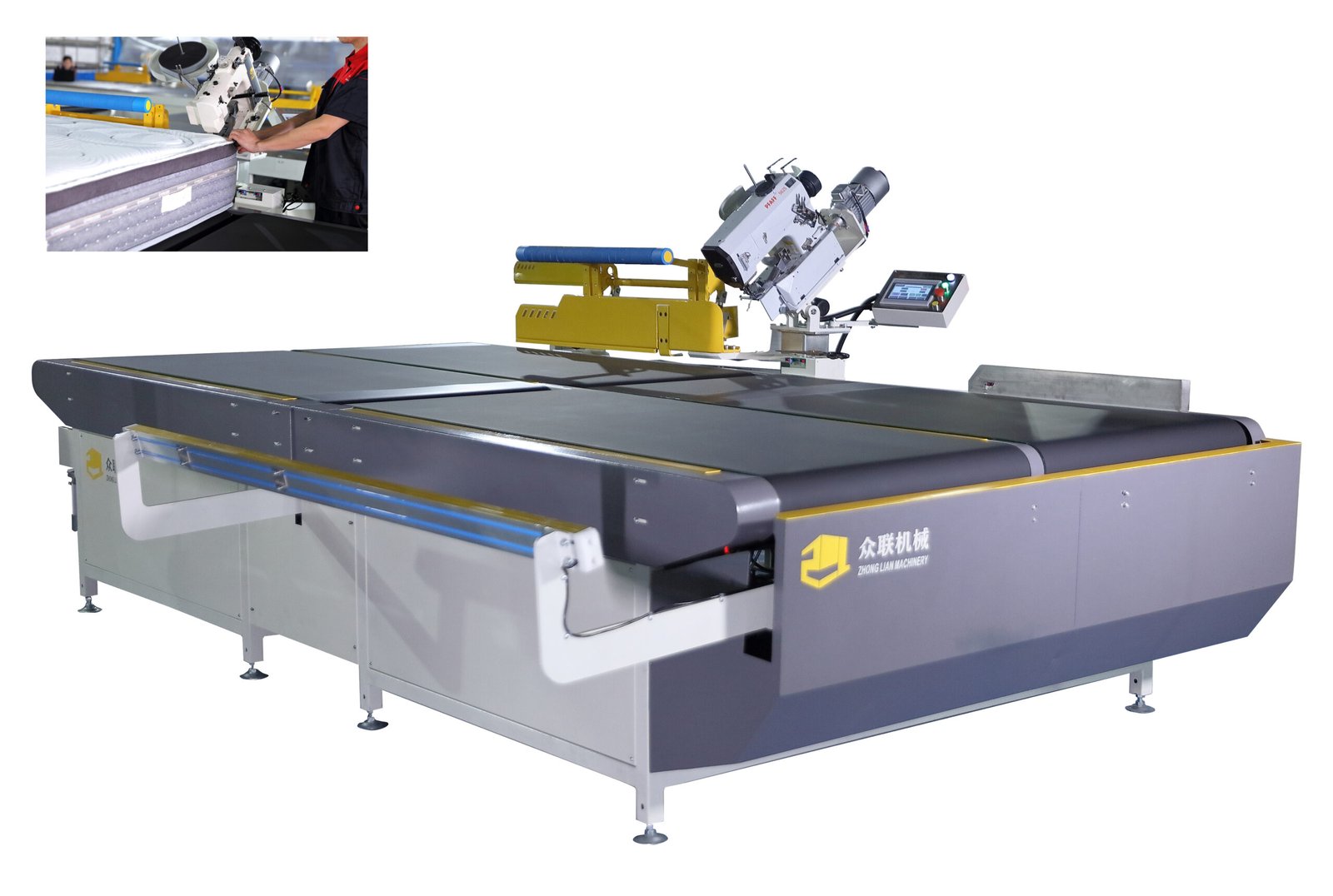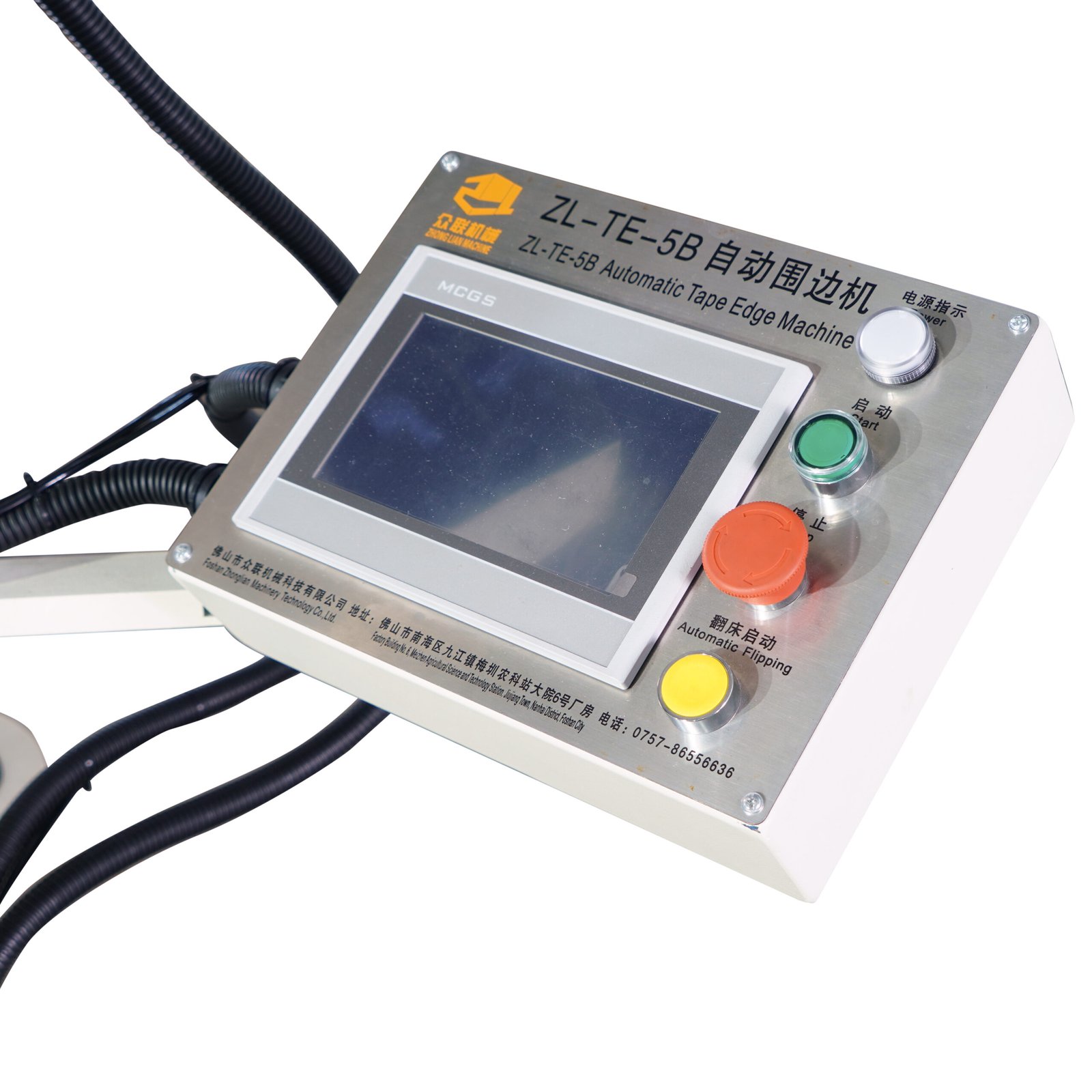The demand for faster, better, and cheaper mattress manufacturing is rising—but outdated equipment keeps dragging factories down.
Automatic sewing machines dramatically boost production speed, ensure consistent quality, and reduce labor costs, making them essential for modern mattress factories.

In this article, I’ll explain how automatic sewing machines can transform mattress production. You’ll discover their key features, how they impact speed and cost, and why they matter more than ever.
What Are the Key Features of Automatic Sewing Machines?
Outdated machines slow you down and burn cash. Modern factories need smarter tools to keep up.
Automatic sewing machines feature programmable controls, high-speed precision, and material adaptability, minimizing error while maximizing throughput.

Computerized Controls
Most automatic machines today use PLC (Programmable Logic Controller) systems with touch-screen interfaces. This allows easy control over:
- Stitch patterns
- Material tension
- Motor speeds
- Start/stop sequences
The interface is intuitive, often multilingual, and saves time during training.
Material Versatility
My customers often ask: Can your machine handle different fabrics?
Yes. A quality automatic sewing machine adapts to various materials—quilts, foam, spring nets—without manual recalibration. It can also switch between multiple thread types and seam styles with preloaded settings.
Precision Stitching at High Speed
Many models stitch up to 220 mattress units/hour, depending on design. Compare that with 80–100 for semi-auto models. Precision ensures each product meets QC standards without rework.
| Feature | Manual Machine | Semi-Auto | Fully Automatic |
|---|---|---|---|
| Speed (units/hour) | 40–60 | 80–100 | 130–220 |
| Stitch Consistency | Medium | Good | Excellent |
| Setup Time (spec switch) | >30 mins | 15–20 mins | <5 mins |
| Skill Level Needed | High | Medium | Low |
How Do Automatic Sewing Machines Improve Production Speed?
Long wait times and bottlenecks cost money. Faster sewing lines are no longer optional—they’re survival tools.
Automatic sewing machines reduce cycle times and downtime, letting factories double output without increasing headcount.

Less Downtime, More Throughput
One of my clients in Southeast Asia switched from semi-auto to a dual-needle automatic machine. Their daily output jumped from 6,000 to 11,000 units. Why?
Because auto machines require almost zero intervention mid-shift. They run continuously, detect errors themselves, and reset in seconds.
Seamless Transition Between Models
Thanks to memory settings, workers can switch between different mattress types instantly. Machines store dozens of preset stitch maps—just select and start. This is crucial for factories that handle varied SKUs.
Integrated Workflows
Top-tier machines often come with built-in conveyors, fabric alignment guides, and tension controllers. This removes friction between cutting, stitching, and gluing stages.
Real-world example: One European customer used to run 3 sewing lines. After upgrading to two high-speed auto models, they shut one line and increased weekly output by 25%.
How Do Automatic Sewing Machines Reduce Labor and Operational Costs?
Hiring skilled workers is hard. Keeping them long-term is harder. Machines that "think" are the only scalable solution.
Automatic sewing machines reduce labor by 40–60%, lower defect rates, and slash downtime-related losses.
Lower Labor Costs
Manual sewing lines typically require 2–3 workers per shift. With automatic machines, one person can monitor 2–3 lines simultaneously. This means you can reassign staff to higher-value tasks or reduce overtime.
| Metric | Manual Sewing | Auto Sewing |
|---|---|---|
| Workers per shift | 3 | 1 |
| Training time (avg.) | 30 days | 5–7 days |
| Human error rate | 5–10% | <1% |
| Downtime due to fatigue | High | Minimal |
Fewer Errors = Lower Scrap Cost
Manual sewing often leads to:
- Misaligned patterns
- Weak seams
- Double stitching
These issues require rework or full product rejection. Auto machines reduce this drastically. Stitch accuracy and tension control are electronically maintained.
Longer Machine Life, Lower Maintenance
Because auto machines use servo motors and smart detection systems, their wear-and-tear is lower. And most wear parts (like thread cutters or guides) are modular and quick to replace.
Example ROI Calculation
If you invest in an automatic mattress sewing machine that costs $20,000:
- You save $1,200/month on labor
- Reduce waste costs by $500/month
- Increase monthly output by 30%
You break even in 10–12 months. After that, it’s pure gain.
Conclusion
Automatic sewing machines are not just upgrades—they’re necessities for mattress factories that want speed, quality, and profit.
Get in touch with us for tailored solutions! We look forward to collaborating with you and shaping a brighter future together!
📞 | WhatsApp:+86 15220512074
📧E-mail:zhongliantec@gmail.com
Web | Link:mattressmachineryzl.com
